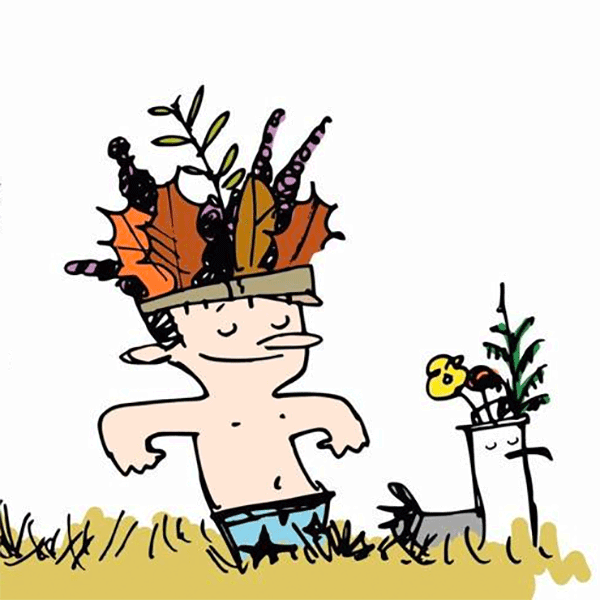How Bears QB Caleb Williams 'has improved dramatically' in the play-action passing game
Published in Football
CHICAGO — On first-and-10 with 10:30 left in the third quarter Sunday, Chicago Bears quarterback Caleb Williams faked a handoff to Kyle Monangai, whipped around and planted the ball in Rome Odunze’s belly for a 14-yard gain with Pittsburgh Steelers cornerback Joey Porter Jr. draped all over Odunze.
Set up at Pittsburgh’s 29-yard line, Williams found DJ Moore in the end zone on a seam route three plays later to pull the Bears ahead 24-21 in an eventual 31-28 victory.
Williams’ connection to Odunze was one of a handful of play-action passes over the middle that served as drive movers and vexed the Steelers secondary.
“You have to give those guys credit,” Steelers coach Mike Tomlin said. “They had some time on inside breaking routes. The quarterback (Williams) was highly accurate on play(-action) pass, turning his back to the defense and coming up and throwing.
“And sometimes you’ve got to give credit to the opponent. Certainly I do in this instance.”
Williams’ use of play action could be a big factor in Friday’s game against the Philadelphia Eagles. Bears coaches noted how the Eagles like to put a “shell” on passing games to stifle explosive plays, but the numbers show the Eagles could be vulnerable to play action.
The Eagles give up the third-most play-action passing yards per game at 82.3, according to NFL Pro. They also allow the second-most yards after the catch over expected (plus-130) and the most expected points added (EPA) per pass against play action (plus-0.46).
Dallas Cowboys quarterback Dak Prescott threw play-action touchdown passes to wide receiver George Pickens and tight end Brevyn Spann-Ford on Sunday night to spark a 21-point rally for a 24-21 upset of the Eagles.
NFL quarterbacks using play action isn’t unusual. What’s unusual in this case is Williams has been making it a much stronger part of his game than last season. As a rookie, he ranked 32nd in play-action usage — just 17.3%.
Through Week 12 this season, he has the third-highest play-action percentage (the rate of drop-backs using play action) at 32.0%, behind only the Los Angeles Rams’ Matthew Stafford (36.3%) and the Indianapolis Colts’ Daniel Jones (35.2%), according to NFL Pro.
Williams said its usage this season has been more about the benefits to the Bears offense as a whole than just his passing game .
“The stats of QBs when you can play under center — play actions, keepers, screens, the run game — it all affects and it all looks the same (to defenses), and that’s who we are,” Williams said. “Trying to make everything look the same but be different.”
That causes indecision for a defense, affording Williams more time in the pocket. And it also helps the running game.
“Our details (focus) on making sure everything looks the same when it is a play action or a keeper or a naked (bootleg), any of those things, making sure it looks exactly the same as a run,” Williams said. “Coach (Ben Johnson) does a good job of having the different screens and different motions and all these different things to also look the same, to be able to help the protection, help in the disguise of what we’re doing, kind of confuse the defense.
“It’s something we’ve worked on. It’s something that I’ve worked on, just getting consistent with footwork and delivering a good ball for the guys.”
Williams’ 17-yard pass to Luther Burden III in the first quarter against the Steelers and his 20-yard strike to Moore late in the third — both on first down — are examples of deep play-action attempts that can keep defenders off balance and keep them honest in the run game.
It also works the other way around, with the running game setting up the play-action pass, center Drew Dalman said.
Play action “can definitely be challenging (for pass protection), but it’s what we want for sure,” Dalman said. “The scheme and the way we run the ball helps protect those play passes and gets more sell. And so that kind of all marries together well.”
Williams is plus-15.8 this season in EPA while using play action versus plus-3.5 without it. Last season he was plus-1.4 in play-action EPA and minus-70.8 with no play action, according to NFL Pro’s Next Gen Stats.
His completion percentage through 11 games is 62.8% with play action, 57.5% without it.
“He’s getting more comfortable there,” Johnson said. “It’s an area that he has improved dramatically since I got here, from springtime all the way up to this point. He’s got a lot more confidence throwing those things inside the numbers.”
Offensive coordinator Declan Doyle said the coaching staff didn’t have a lot of tape of Williams in play action last season. Coach Matt Eberflus and offensive coordinator Shane Waldron ran a different system.
But play action was “a huge part of Ben’s offense in Detroit,” Doyle said, as well as other systems to which he and Johnson were exposed.
“You always want to have the ability to hide the ball and turn your back to the defense,” Doyle said. “It really allows your run game to be tied into your play action and your movement game. And so we felt like it was an important element that we wanted in the offense.
“And Caleb has really embraced it. He’s done a great job of working through the nuances of those things, whether that be footwork, whether that is related to his eyes once he snaps his eyes around and getting them to the defense and being able to reassess. But he’s certainly come a long way from where we started.”
While some of Williams’ biggest throws have come over the middle — his game-winning touchdown pass to Colston Loveland against the Cincinnati Bengals out of shotgun or his play-action toss to Cole Kmet to spark the rout of the Dallas Cowboys — that area of the field hasn’t been as big a staple of the Bears’ offensive design as you’d think.
Among short-area throws — left, middle or right — the Bears have targeted the middle on the fewest plays (57) but have the highest completion percentage (75%), according to the NFL’s Game Statistics and Information System (GSIS). That percentage on short-middle throws ranks eighth in the league.
Among deep throws, they’ve taken 22 shots over the middle — just two more than to the left and well behind their 45 to the right — and have completed them at the highest rate (55%), which ranks 10th in the league.
The middle also can get messy, where interceptions happen.
“Some guys get a little bit nervous and get a little bit afraid to do that. He’s not that tight,” Johnson said of Williams. “He’s always been a high-level seam thrower or bender versus two-high (coverage).
“But now, when you’re talking about the daggers or the drift routes (types of in-breakers) that we have in, he’s done a nice job of trusting the fact that he can turn his back to the defense and yet still flip around (and) make a decision whether to pull the trigger or not.”
That’s not to say Williams has played a clean game overall lately. Despite throwing for three touchdowns and finishing with a 104.3 rating Sunday, he completed just 19 of 35 passes (54.3%). Entering the game, his completion percentage above expected was minus-7.5, per Next Gen Stats.
On the field, he looked erratic, throwing too wide or behind his intended receivers or sailing some balls.
Early in the first quarter from the Bears 44, Williams spun out of play action and had Moore open for a potential 21-yard completion, but he placed the ball on a low trajectory slightly behind Moore, who tried to slide to catch it, to no avail.
In the second quarter, again off play action, Williams threw a ball too high for Burden deep down the middle near the 50-yard line.
“I would like to see it brought down a little bit, yeah,” Johnson said Monday.
Williams said after the game: “In the beginning, it didn’t feel like I got into a good rhythm. I was missing passes and it was kind of weird. I wasn’t too frustrated, like a couple weeks ago (against the New York Giants) where I was just missing and I got supremely frustrated.
“I understood and I wrote on my notes for myself to stay positive for myself. … We’ll figure it out. We’ll go back and watch and figure out why.”
By Tuesday, he had figured out where he went wrong on those errant throws.
“My base got a little wide and things started getting high on me,” Williams told reporters at Halas Hall. “So just circling back to the small details that go into it. … That’s every single detail when it comes to my position, and so it was my footwork and just my legs not being under me.”
____
©2025 Chicago Tribune. Visit chicagotribune.com. Distributed by Tribune Content Agency, LLC.







Comments